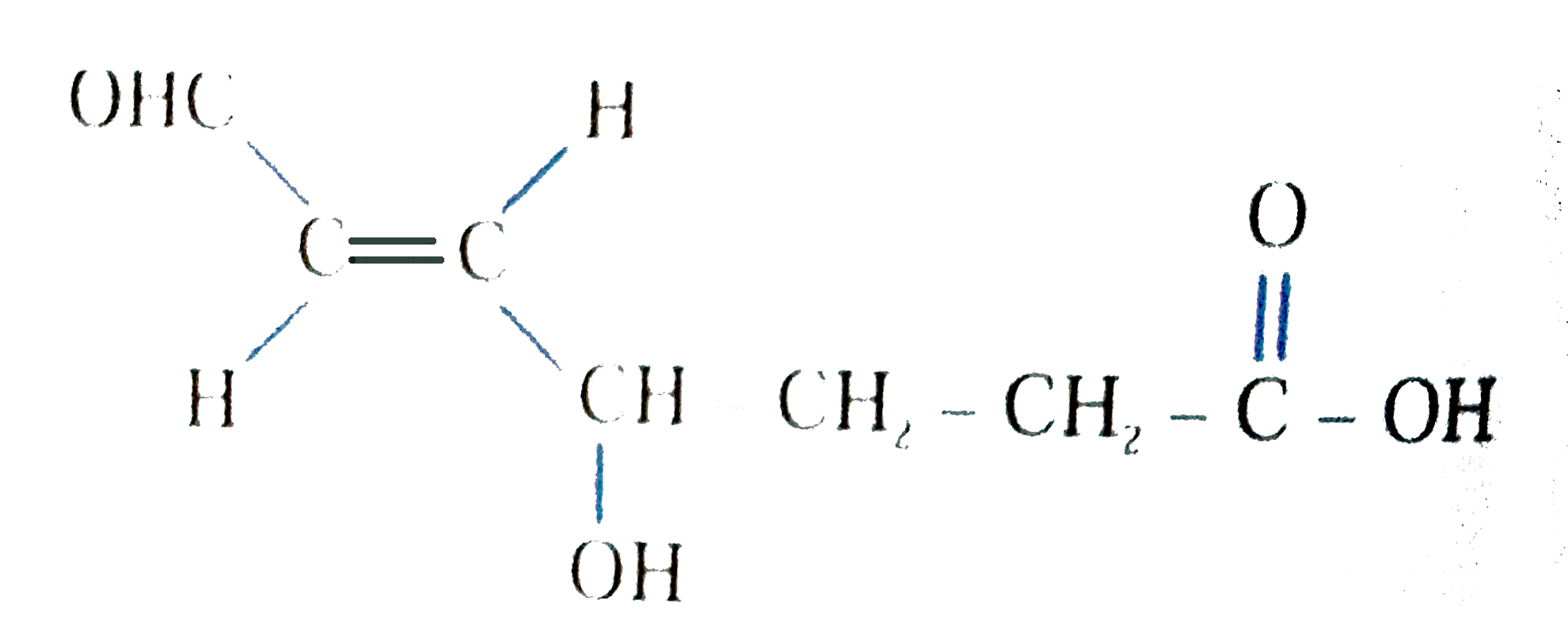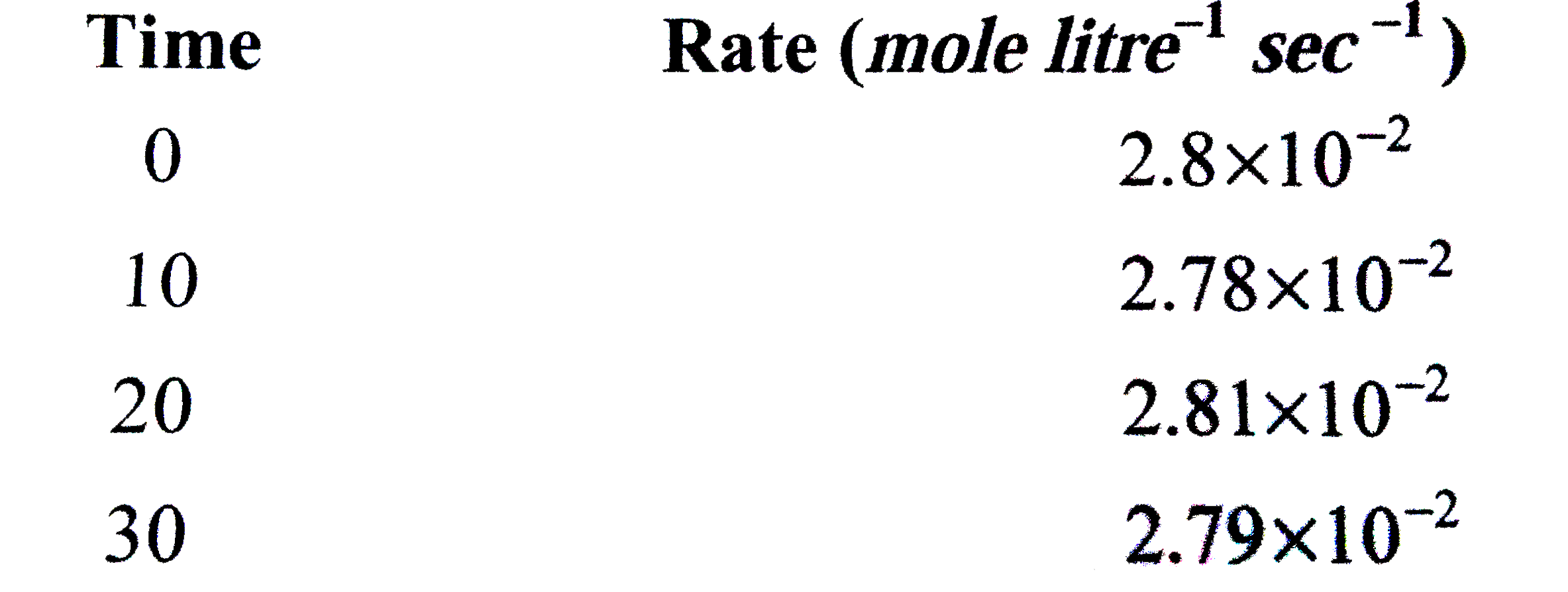For the reaction A→ Products, −d[A]dt=k and at different time interval, [A] values are
![For the reaction A to Products, (-d[A])/(dt)=k and at different time interval, [A] values are At 20 minutes, rate will be](https://d10lpgp6xz60nq.cloudfront.net/physics_images/NAR_NEET_CHE_XII_P1_C04_E09_066_Q01.png)
At 20 minutes, rate will be
12 mol/min
10 mol/min
8 mol/min
0.4 mol/min
The correct Answer is:D
For every 5 minutes change in concentration is 2 moles per litre
Rate =25=0.5
Topper's Solved these Questions
- CHEMICAL KINETICS BOOK - NARAYNACHAPTER - CHEMICAL KINETICS EXERCISE - EXERCISE -2 (H.W) (ORDER OF REACTION)
16 Videos
- CHEMICAL KINETICS BOOK - NARAYNACHAPTER - CHEMICAL KINETICS EXERCISE - EXERCISE -2 (H.W) (HALF LIFE)
13 Videos
- CHEMICAL KINETICS BOOK - NARAYNACHAPTER - CHEMICAL KINETICS EXERCISE - EXERCISE -2 (C.W) COLLISION THEORY
2 Videos
- CARBOXYLIC ACIDBOOK - NARAYNACHAPTER - CARBOXYLIC ACIDEXERCISE - All Questions
288 Videos
- CHEMISTRY IN EVERYDAY LIFEBOOK - NARAYNACHAPTER - CHEMISTRY IN EVERYDAY LIFEEXERCISE - ASSERTION & REASON TYPE QUESTIONS
10 Videos
Similar Questions
Rate expression for Xa+Yb→ products is Rate =K[A]m[B]n. Units of K w.r.t A and B respectively are s−1 and M−1s−1, when concentrations of A and B are increased by 4 times, then
View SolutionThe half life for the reaction N2O5⇔2NO2+12O2 in 24hr at 30∘C. Starting with 10g of N2O5 how many grams of N2O5 will remain after a period of 96 hours ?
View SolutionFor A+B→C+D,ΔH=−20kJmole−1. The activation energy for the forward reaction is 85 kJ. Then the activation energy for the backward reaction is ___
View SolutionProvide IUPAC name of the compound given below.

View Solution(A) Analgesics bring down body temperature during high fever.
(R ) Tetracyclin is a tranquillizer.
View SolutionFor the reaction: aA + bB rarr cC+dD Rate = (dx)/(dt) = (-1)/(a)(d[A])/(dt) = (-1)/(b)(d[B])/(dt) = (1)/( c)(d[C])/(dt) = (1)/(d)(d[D])/(dt) A reaction follows the given concentration-time graph. The rate for this reaction at 20 s will be
View SolutionnA→ Product
dxdt=k[A]n
For the reaction, rate constant and rate of the reaction are equal, then on doubling the concetration of A, rate becomes,
View SolutionThe rates of a certain reaction (dc/dt) at different times are as follows

The reaction is
View SolutionThe rate of the reaction may be expressed by the following different ways .
12d[A]dt=−13d[B]dt=−d[C]dt
reaction is
View SolutionFor a reaction A+Bto Products, rate law is -(d[A])/(dt)=k[A]_(0) . The concentration of A left after time t when t=(1)/(k) is
View SolutionA+2B→उत्पाद , का अभिक्रिया वेग समीकरण −d[A]dt=k[A][B]2है । यदि B अत्यधिक मात्रा में उपस्थित हो , तो अभिक्रिया की कोटि क्या होगी ?
View SolutionFor the reaction, A→ Products, −d[A]dt=k and at different time interval, [A] values are
Time05 min10 min15 min[A]20M18M16M14M
At 20 min, rate of reaction in M m in−1 will be
View SolutionFor the reaction A→ Product, −d[A]dt=k and at different time interval, [A] values are :

At 20 minute, rate will be :
View SolutionThe rate of the reaction A+B+C→ Product is given by: rate =−d[A]dt=k[A]1/2[B]1/4[C]0 The order of reaction is:
View SolutionThe rate law of the reaction, A+2B to Product , is given by d["Product"]//dt=K[A]^(2)*[B] . If A is taken in large excess, the order of the reaction will be
View SolutionThe rate of reaction A+2Bto Products is given by -(d[A])/(dt)=k[A][B]^(2) .If B is present in large excess, the order of reaction is
View Solution
